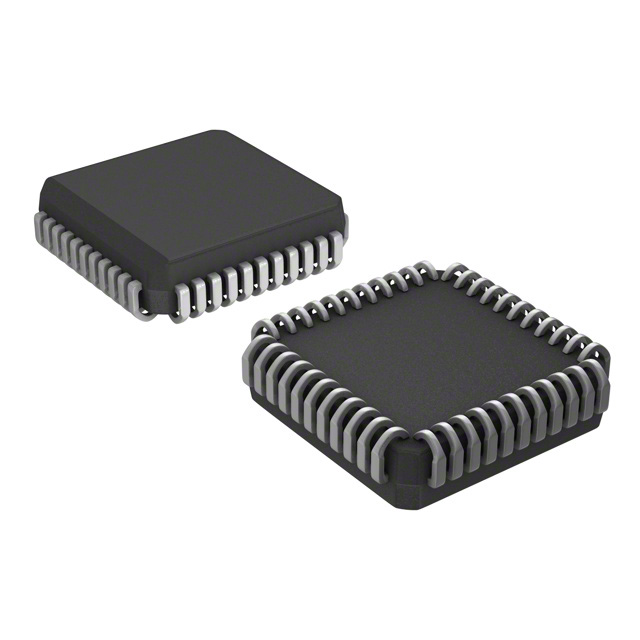AT90S8515A-8JI
Product Overview
Category
The AT90S8515A-8JI belongs to the category of microcontrollers.
Use
This microcontroller is commonly used in various electronic applications that require embedded control and processing capabilities.
Characteristics
- High-performance 8-bit RISC architecture
- Low power consumption
- Flash memory for program storage
- EEPROM for data storage
- Wide operating voltage range
- Multiple communication interfaces
- Timers and counters for precise timing operations
Package
The AT90S8515A-8JI is available in a compact and durable package, suitable for surface mount technology (SMT) applications.
Essence
The essence of this microcontroller lies in its ability to provide efficient and reliable control and processing capabilities in a wide range of electronic devices.
Packaging/Quantity
The AT90S8515A-8JI is typically packaged in reels or tubes, with quantities varying based on customer requirements.
Specifications
- Architecture: 8-bit RISC
- Operating Voltage: 2.7V to 5.5V
- Flash Memory: 8KB
- EEPROM: 512 bytes
- RAM: 512 bytes
- Clock Speed: Up to 8 MHz
- Communication Interfaces: UART, SPI, I2C
- Timers/Counters: 3 x 16-bit, 1 x 8-bit
- ADC Channels: 8
- Digital I/O Pins: 32
- Operating Temperature Range: -40°C to +85°C
Detailed Pin Configuration
The AT90S8515A-8JI has a total of 40 pins, each serving a specific purpose. The pin configuration is as follows:
- Port A (PA0-PA7): General-purpose I/O pins
- Port B (PB0-PB7): General-purpose I/O pins
- Port C (PC0-PC7): General-purpose I/O pins
- Port D (PD0-PD7): General-purpose I/O pins
- XTAL1, XTAL2: Crystal oscillator input/output
- RESET: Reset pin for system initialization
- VCC: Supply voltage
- GND: Ground
Functional Features
The AT90S8515A-8JI offers a range of functional features that enhance its usability and performance. Some notable features include:
- High-speed processing capabilities
- In-system programmability
- Power-saving sleep mode
- Interrupt handling for real-time event response
- Watchdog timer for system reliability
- Analog-to-Digital Converter (ADC) for sensor interfacing
- Pulse Width Modulation (PWM) for precise control of output signals
Advantages and Disadvantages
Advantages
- Efficient and reliable control capabilities
- Low power consumption
- Wide operating voltage range
- Ample program and data storage capacity
- Multiple communication interfaces for versatile connectivity
Disadvantages
- Limited processing power compared to higher-bit microcontrollers
- Relatively small amount of memory for complex applications
- Lack of built-in peripherals for specific applications
Working Principles
The AT90S8515A-8JI operates based on the principles of the 8-bit Reduced Instruction Set Computing (RISC) architecture. It executes instructions stored in its Flash memory, utilizing various internal components such as the ALU, registers, and timers to perform desired tasks. The microcontroller interacts with external devices through its I/O pins and communication interfaces.
Detailed Application Field Plans
The AT90S8515A-8JI finds application in a wide range of electronic systems, including but not limited to:
- Industrial automation systems
- Home automation and control systems
- Automotive electronics
- Medical devices
- Consumer electronics
- Robotics and mechatronics
- Internet of Things (IoT) devices
Detailed and Complete Alternative Models
- ATmega8515: A higher-performance alternative from the same family, offering increased program memory and additional peripherals.
- PIC16F877A: A popular microcontroller from Microchip with similar capabilities and a large user base.
- STM32F103C8T6: An ARM-based microcontroller with enhanced processing power and extensive peripheral options.
These alternative models provide varying levels of performance and features, allowing users to choose the most suitable option for their specific application requirements.
Word count: 529 words
Lista 10 Vanliga frågor och svar relaterade till tillämpningen av AT90S8515A-8JI i tekniska lösningar
Sure! Here are 10 common questions and answers related to the application of AT90S8515A-8JI in technical solutions:
Q: What is the AT90S8515A-8JI microcontroller used for? A: The AT90S8515A-8JI is a microcontroller commonly used in embedded systems for various applications such as industrial control, automation, robotics, and consumer electronics.
Q: What is the operating voltage range of the AT90S8515A-8JI? A: The AT90S8515A-8JI operates within a voltage range of 4.0V to 5.5V.
Q: How much flash memory does the AT90S8515A-8JI have? A: The AT90S8515A-8JI has 8KB of in-system programmable flash memory.
Q: Can I use the AT90S8515A-8JI for analog signal processing? A: Yes, the AT90S8515A-8JI has an 8-channel 10-bit ADC (Analog-to-Digital Converter) that can be used for analog signal processing.
Q: Does the AT90S8515A-8JI support serial communication protocols? A: Yes, the AT90S8515A-8JI supports multiple serial communication protocols such as UART (Universal Asynchronous Receiver/Transmitter) and SPI (Serial Peripheral Interface).
Q: What is the maximum clock frequency of the AT90S8515A-8JI? A: The AT90S8515A-8JI can operate at a maximum clock frequency of 8 MHz.
Q: Can I interface external memory with the AT90S8515A-8JI? A: Yes, the AT90S8515A-8JI supports external memory interfacing through its address and data bus.
Q: Does the AT90S8515A-8JI have any built-in timers/counters? A: Yes, the AT90S8515A-8JI has three 16-bit timers/counters that can be used for various timing and counting applications.
Q: Can I program the AT90S8515A-8JI using a high-level language like C? A: Yes, the AT90S8515A-8JI can be programmed using high-level languages like C or assembly language.
Q: Is the AT90S8515A-8JI suitable for low-power applications? A: Yes, the AT90S8515A-8JI has power-saving features such as sleep modes and an on-chip oscillator that make it suitable for low-power applications.
Please note that these answers are general and may vary depending on specific requirements and configurations.


